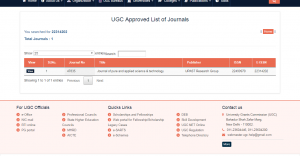Interface roughness in OPV device
Dr. Hemant Kumar
Government Degree College, Kasganj, U.P., India.
hemantamu@gmail.com
The performance of OPV (Organic photo voltaic) or OSC’s (Organic solar cell) devices are depend on mobality of free electron and holes generated in organic active layer. The interface between donar and acceptor layer are active site for exciton dissociation. The number of free electron and holes formed after dissociation of exciton are major contributor of Jsc. We also study the effect of roughness of Phthalocyanine (small molecule organic material) as donar layer with C60 as acceptor layer in bilayer OPV device. We have studied the AFM and XRD of copper phthalocyanine (CuPc), zinc phthalocyanine (ZnPc) and Metal free phthalocyanine (Hydrogen Phthalocyanine – H2Pc). We found that the selections of active layer material in OPV device are such that the roughness level of both materials forms maximum interface area between donar and acceptor.
Keywords: Phthalocyanine, AFM, Interface roughness.






